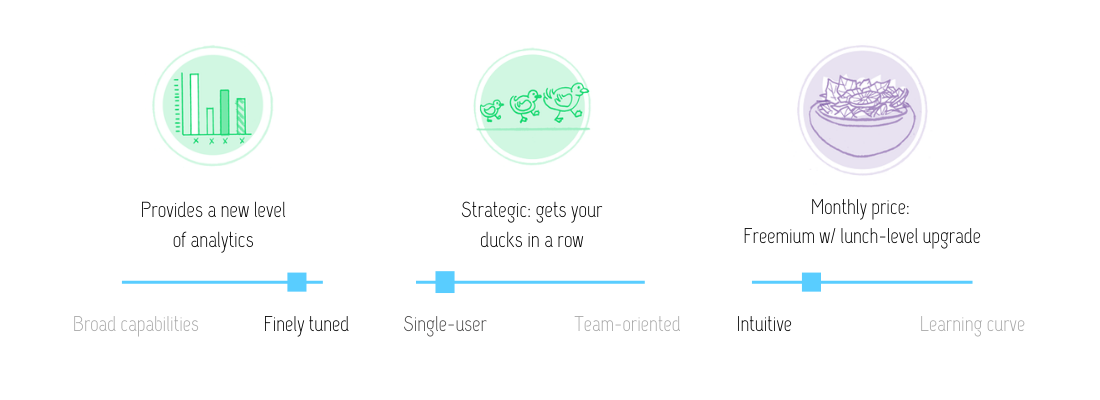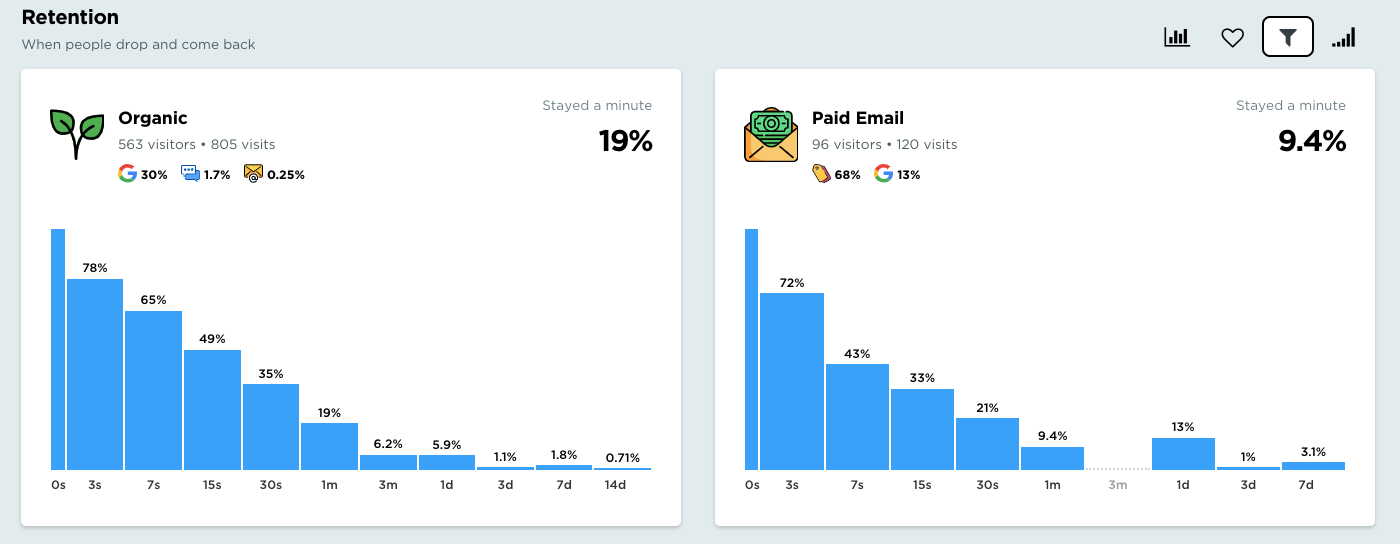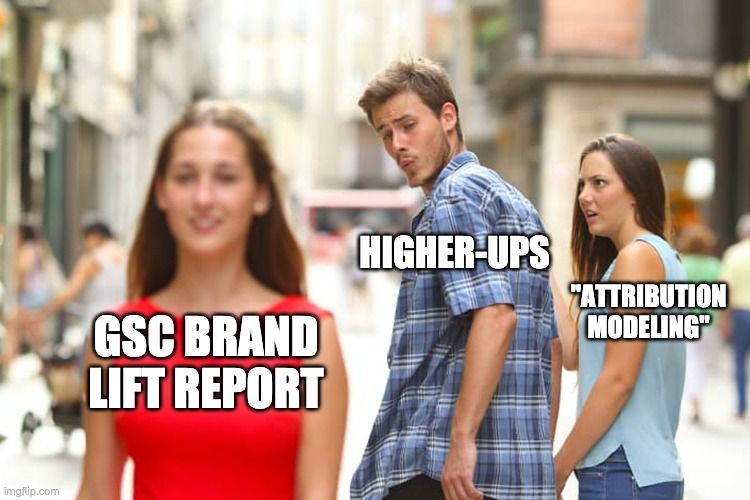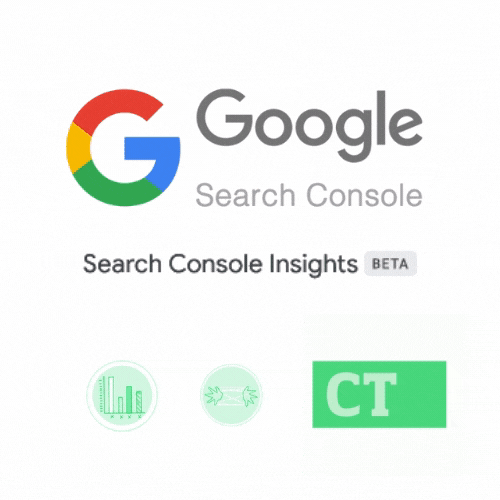This essay originally was published on June 3, 2021, with the email subject line CT No. 84: "Reconsidering the humble but mighty hyperlink," alongside an essay about reconsidering in-line and other methods of hyperlinks.
I've said it before and will likely say it again: Google Analytics is still the best tool for measuring website performance. It's the gold standard, the best for auto-filtering spam traffic, the best for measuring deeper than pageviews.
But GA is hard to understand—and decidedly more so with the introduction of Google Analytics 4. Many companies have thrown up their hands at understanding content analytics because of GA's complexity. Many organizations also hold a healthy but misguided skepticism of anything Google, so companies disregard the analytics interface along with Google Ads and Display, even though they are not the same thing.
To help understand marketing and web analytics more plainly, I recommend Volument as a supplement to a free GA installations. Volument is the only new web analytics tool I've seen with an appropriate degree of accuracy and complexity for content measurement.
Volument at a glance

Volument organizes web traffic by
- channel/medium—direct, organic, paid, email, referral, etc.
- perceived marekting journey stage based on user behavior (time on page, pages per session, etc.)
- continent and country
- devices
- browsers
- screen size
Its icons and charts offer helpful comparative features and explanations, more similar to how Kissmetrics was set up back in the day. Its interface is infinitely less complex than Google Analytics, and it can definitely help new analytics users understand and analyze channel behavior at a glance.
I also LOVE that it's not focused on real-time analytics, which are garbage dragon-chasers for people who love hitting the refresh button. Instead, users can filter by the level of statistical significance they'd prefer, which is... not the most intuitive but definitely intriguing.
Volument does not provide automated page-by-page traffic analytics, rendering it nearly useless for most content-focused sites. However, users can set up "website areas" (aka content groupings) based on URL paths, which is super fantastic if you've built robust folder-based URLs on your site.
As far as accuracy, the total traffic numbers Volument measured were higher than traffic totals in GA4—but not by much. Higher total traffic numbers are pretty typical in alternative analytics platforms, since Google's spam filters are wayyyyyy more robust and customizable. Analytics software will never be 1:1 with traffic matching between software—so, as with everything analytics, take benchmarks within the tool and measure growth and decline vs. absolute page numbers.
For the moment, there is no on-site documentation of the channel names with the clever icons you see in Volument's reports, so you'll have to look closely to see exactly what the tool auto-classifies as "organic."

The paid version offers more settings, including on-page optimization, custom periods, and "custom audiences," a problematic concept to be discussed another time.
I recommend Volument for:
- Companies that would like a more privacy-focused analytics solution but still need to understand conversion rate
- Organizations looking to understand how their media mix and user behavior interact on their website
- Analytics professionals looking to install a clearer analytics solution for teammates who are overwhelmed by GA
Hand-picked related content








